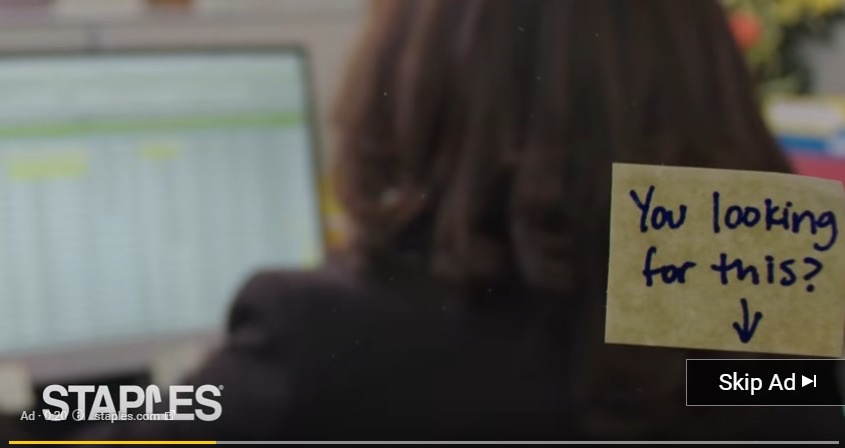Everyone has had that moment when they excitedly try to show someone a video on YouTube, and then, wait, what’s that?
Oh, it’s NOT the video you were looking for, but an advertisement that creates an awkward limbo of “wait this isn’t it, hang on.”
Enter our saving graces, the “Skip Ad” button.

After a few seconds (depending on the video and the channel who posted it) this little guy comes in to save the day, allowing you to get right to the content you wanted in the first place.
Unfortunately for users (though wonderful for marketers) we are going to be seeing the Skip Ad button less and less often on the platform.
YouTube’s official Creator Insider channel posted this video last Thursday, announcing a big change to how partners handle ads on their channels.
The biggest change in the ad program is that any channel monetizing its videos from ads can now choose to implement non-skippable ads. In the past, only a very select few in the channel partner program were able to run non-skippable ads, but starting this week, every channel monetizing from ads can benefit from the option.
Check out the rest of the video for more details:
Why Are They Making This Change?
Well, as mentioned above, if advertisers are paying more, YouTube (and Google) is making more. But indirectly they want creators to be incentivized to create more and better content for their channels.
The better the content they create, the more views they get, which is attractive to advertisers on YouTube. It gives creators more control over the ads on their channels and how much ad revenue they make on the platform.
So What Does This Mean for You?
As a YouTube Creator
As mentioned above, for YouTube itself, non-skippable ads means they are going to make a LOT more money because advertisers will pay more for non-skippable ads. The same goes for creators whose videos host the ads.
If you’re one of them, YouTube is adding a tool to let you have control over which of your videos will have non-skippable ads in your dashboard.
Older video content that has skippable ads will be switched over to non-skippable BY DEFAULT when the change happens (you will get a notification in your channel dashboard) even if you weren’t previously allowed to run non-skippable ads.
This means that any channel owners/creators will need to dig deep into their videos and make some changes if they want to maintain the same experience.
🔎 Related: How Much Do YouTube Ads Really Cost? (A Pricing Guide)
Luckily, you will be able to do this in bulk.
Many video creators are pointing out their audiences might completely click away from their videos instead of waiting for the ad to finish, which would deny them any ad revenue at all from that view.
But others are viewing it as more control over their channel and more possibilities when it comes to their ads.
With the rollout, channel owners will be able to track their engagement and revenue flow from videos that include the different types of ads, so they can make educated decisions for what works best with their audiences.
They also have control over what ads are played on their channels. With YouTube Adsense, they can block specific advertisers or even entire ad categories.
As an Advertiser
For advertisers, the new option means a bigger expense, but also a higher likelihood that their ads will get more eyes (unless, of course, people navigate away from the video entirely).
As a Viewer
Long story short is that viewers will be watching more full-length ads before they can get to their content.
For a more, “unfiltered” view of the opinions on the switch, check out the comments on the video, but for the most part, many users aren’t fans of the change.
Thankfully, however, YouTube made a change to the maximum length the ads can be earlier this year. Non-skippable ads will run between 15 and 20 seconds, down from the typical 30-second ads we are used to.
So, What’s Next?
YouTube certainly isn’t forcing channels to use non-skippable ads, but rather giving them more opportunity to increase their revenue on the platform and enabling them to create more of the content that their viewers love.
If you’re advertising, expect to see your YouTube ads costs increase!


Order Your Copy of Marcus Sheridan's New Book — Endless Customers!

